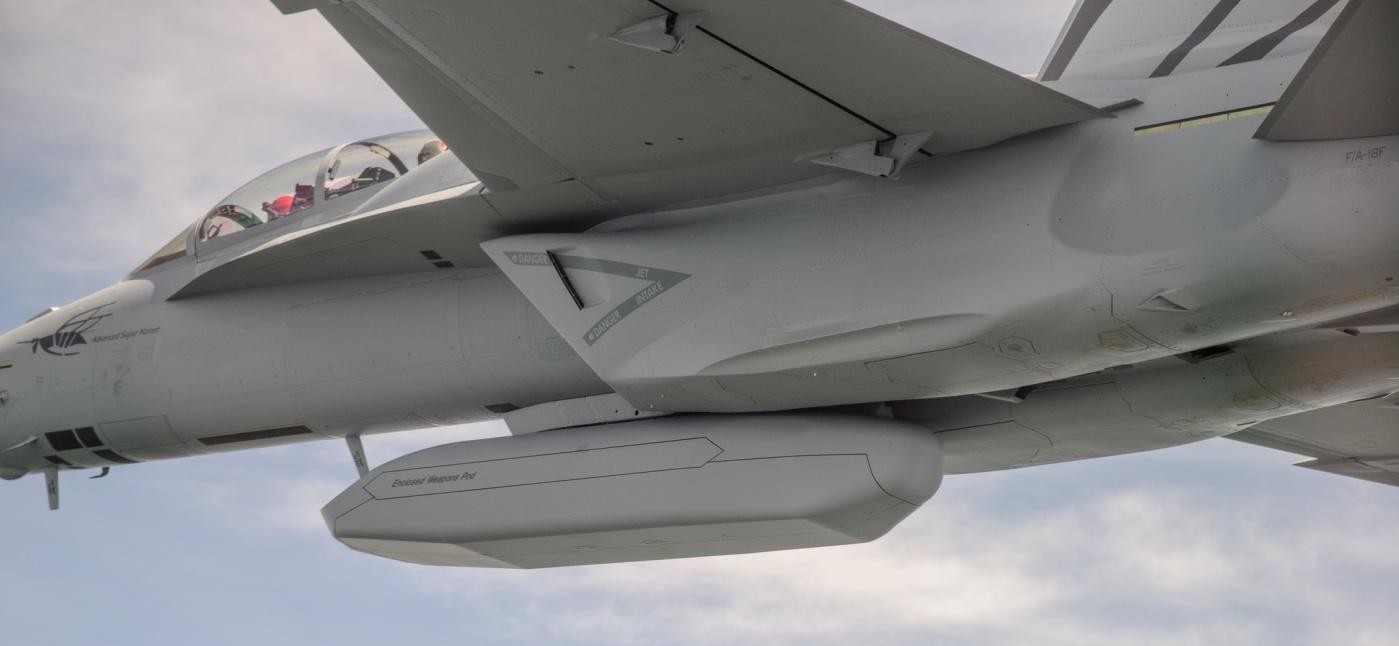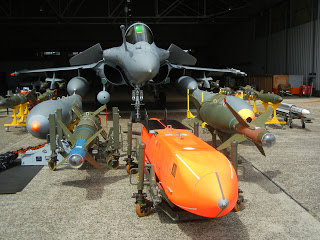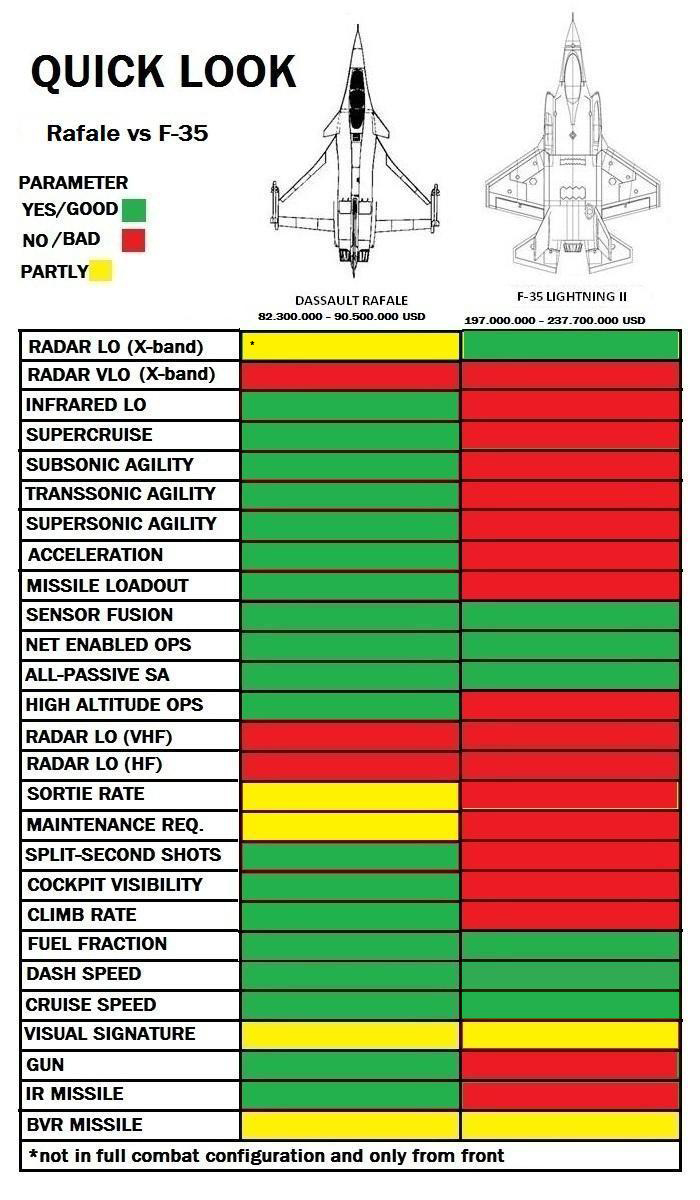موضوع الجيل الرابع المعزز ومن وجهة نظر أمريكية هو جيل رابع ينتمي لفترة التسعينيات بعد الخبرات المستقاة في الثمانينات والتسعينات من تجهيزات الكترونية ورادار مع وراثة التصميم القديم للمقاتلة
لو نظرنا مثلا لطائرات الجيل الرابع المعزز 4.5 GEN من وجهة نظر الأمريكان نجد
*F-18E/F SUPER HORNET
*EF-2000 TYPHOON
غي حين تم اسقاط طائرات من حسابات الجيل المعزز رغم التسويق فعليا لها كجيل معزز مثل
*SU-35
*DASSAULT RAFALE
*GAS-39 GRIPEN
المنطق الوحيد للتفسير هو أن إطلاق الهورنيت والتايفون كان بالتسعينات مقابل اطلاق الرافال والجريبين والسوخوي بالثمانينات
انا غير مقتنع بهذا التسفير لكن هذا ما وجدته من فارق
انا ايضا لست مقتنعا بشغل الـ Marketing هذا
ولاحظ هنا كيف قفزت المقاتلات ( الامريكية ) للجيل القادم ( بدون ذكر الجيل )
ابعدوا الظن حيث ان بعض الظن اثم وقولوا 4+ او 4 ++ ولكن ( Next Generation ) !!!
يمكن تفسيرها بأنها جيل خامس مثلا
**************
ومايجعلني اتشكك في التصنيف من اساسه انه لايوجد معيار متفق عليه عالميا حول ماهية الجيل الخامس ... لوكهيد مارتين كانت هي من ابتدع هذه التسمية لاغراض تسويقية
A
fifth-generation jet fighter is a
jet fighter classification used around the world that encompasses the most advanced
jet fighter generation as of 2015. Fifth-generation aircraft are designed to incorporate numerous technological advances over the
fourth-generation jet fighter.
The exact characteristics of fifth-generation jet fighters are controversial and vague, with Lockheed Martin defining them as having all-aspect stealth even when armed, low probability of intercept radar (LPIR), high-performance airframes, advanced avionics features, and highly integrated computer systems capable of networking with other elements within the battlespace for situation awareness.
[1]
واقرأوا الانتقادات لهذه التصنيفات
Critics and alternative definitions[edit]
The definition of the term fifth-generation fighter from Lockheed Martin has been criticized by companies whose products do not conform to these particular specifications, such as Boeing and Eurofighter, and by other commentators such as Bill Sweetman:[68] "it is misleading to portray the F-22 and F-35 as a linear evolution in fighter design. Rather, they are a closely related pair of outliers, relying on a higher level of stealth as a key element of survivability – as the Lockheed YF-12 and Mikoyan MIG-25, in the 1960s, relied on speed and altitude."[69]
The United States Navy and Boeing have placed the
Boeing F/A-18E/F Super Hornet in a "next generation" fighter category along with the F-22 and F-35,
[70] as the Super Hornet has a "fifth-generation" AESA radar, modest
radar cross-section (RCS) reductions and sensor fusion.
[71][72] A senior USAF pilot has complained about fifth-generation claims for the Super Hornet: "The whole point to fifth generation is the synergy of stealth, fusion and complete situational awareness. The point about fifth-generation aircraft is that they can do their mission anywhere – even in sophisticated integrated air defense [IADS] environments. If you fly into heavy IADS with a great radar and sensor fusion, but no stealth, you will have complete situational awareness of the guy that kills you."
[73] Michael “Ponch” Garcia of
Raytheon has said that the addition of their AESA radars to the Super Hornet provides "90 percent of your fifth-generation capability at half the cost."
[74] And a top Boeing official has called their newest 4.5 generation fighters "stealth killers".
[75]
In response to the use of the "fifth generation" term, Eurofighter has made a fifth-generation checklist placing different weights on the various capabilities, and arguing that the application of the label to strike aircraft such as Lockheed-Martin's F-35 is ill-advised, and even inconsistent with the aircraft's specifications. Meanwhile, Eurofighter adds "net-enabled operations" as a noteworthy requirement and de-emphasizes full-scope low observability as only one factor in survivability.
[76] In the same article Eurofighter GmbH appear to acknowledge the remarkable performance of Lockheed Martin's F-22 aircraft, while demonstrating that labels as simple as "fifth generation" may easily be devised to serve the interests of the writer.
Richard A. Bitzinger of the S. Rajaratnam School of International Studies, a former consultant for the American
RAND Corporation think tank, suggests that Western Europe's "failure" to develop a fifth-generation jet fighter may reduce these former leaders in the market to also-ran status as the world's attention shifts to the competition between the United States and Asian powers.
[77] Canadians Alex Wilner and Marco Wyss of the Center for Security Studies claim that Europe's failure to "keep up" with the F-35 may make the European jet fighter manufacturers close up shop.
[78] However, Europe may return with a trans-national 'sixth-generation' UCAV, assuming that the political entanglements can be evaded.
[79] The European Defence Agency has warned that the European $60 billion industry could collapse by 2020.
[80]
The Russian Defense Ministry defines fifth-generation as including "stealth technology, supersonic cruising speed, highly-integrated avionics, electronics and fire-control systems".[81]
https://en.wikipedia.org/wiki/Fifth-generation_jet_fighter
ترون ان اول من احتج هم الشركات الاخرى التي مواصفات منتجاتها لاتتفق مع ما حددته لوكهيد مارتين من مواصفات لمايعرف بالجيل الخامس ... واكملوا القراءة لترون ان هناك اختلافات في تعريف ماهية الجيل الخامس ليس فقط بين الشركات بل بين الدول ( لاحظوا تصنيف وزارة الدفاع الروسية لمايعرف بالجيل الخامس )
****************
تعليقي المتواضع
I Don't buy it حتى وان سمينا المسميات بما تعرف عليه اصطلاحا ... ولكن هناك اختلافات كما ابرزت اعلاه ..





